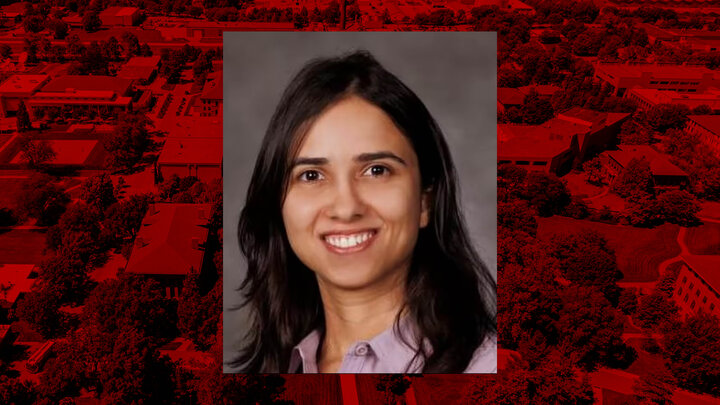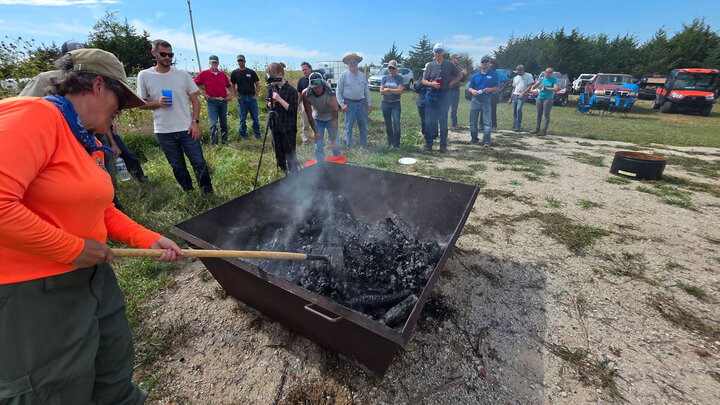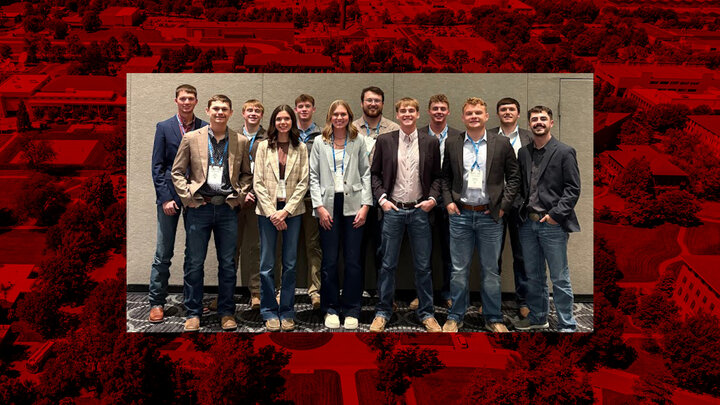Soil health advocates say interest is growing in nurturing the health of the vital natural resource. But there’s no standard way to measure soil health or predict its potential for improvement.
Now, a soil scientist at the University of Nebraska–Lincoln is proposing a name and a concept that could help establish the parameters for measuring baseline soil health and its potential for improvement.
Soil Health Gap is the term coined by Bijesh Maharjan, agronomy and horticulture assistant professor and soil nutrient and management specialist at Nebraska’s Panhandle Research and Extension Center in Scottsbluff. It is also the topic of an article that Maharjan has co-authored and published in the online journal Global Ecology and Conservation.
The article defines Soil Health Gap as the “difference between soil health in an undisturbed native virgin soil and current soil health in a cropland in a given agroecosystem.” Maharjan’s co-authors are Saurav Das, post-doctoral research associate in Maharjan’s soils program in Scottsbluff, and Bharat Sharma Acharya of the Oklahoma Department of Mines.
Maharjan is hoping that the soil health gap concept is a framework that he and his colleagues around the nation can use, refine and continue to develop. Already, he says Soil Health Gap is being discussed widely, including on social media, and used as a concept in grant proposals to fund future research.
Maharjan and his co-authors describe the need for a common approach. “Growing calls and the need for sustainable agriculture have brought deserved attention to soil and to efforts towards improving or maintaining soil health,” they write. But a lack of benchmarks that are relevant and specific to site and soil properties limits research efforts to measuring soil health in terms of physicochemical and biological indicators, and then identifying management practices that could improve it.
This lack of benchmarks leaves some key questions unanswered: How much of cultivated land has degraded since the dawn of agriculture? What is the maximum or realistically attainable soil health goal? “Determination of a benchmark that defines the true magnitude of degradation and simultaneously sets potential soil-health goals will optimize efforts in improving soil health using different practices.”
Maharjan and his co-authors suggest that Soil Health Gap can be determined based on either general or specific soil properties, such as soil carbon levels or aggregates (the physical particles that make up soil). “Scientific advancement in identifying primary soil health indicators and developing soil health index based on (these indicators) is key to a reliable and quantitative measure of soil health.”
The benchmark can be scaled up from site-specific, to regional, to global scale. “Information on soil health gap, on a local or broader scale, can help identify areas with the greatest potential to enhance soil health, prioritize efforts, and invest resources effectively,” according to the article.
Ag producers are interested in the topic of soil health, according to Maharjan. He said he was pleased by the interest shown by attendees at the first Panhandle Soil Health workshop, which he organized in Bridgeport in early March. Maharjan’s article also has generated quite a bit of buzz among colleagues in the soil science field around the nation.
He said the article also has been discussed by members of the Nebraska Healthy Soils Task Force, a 15-member panel created by legislative act in 2019 and appointed by the governor, which is responsible for developing a comprehensive healthy soils initiative and action plan.
According to the chairman of the task force, Keith Burns of Bladen: “In the quest for improving our nation's soils and agricultural productivity, knowledge is power. We are developing knowledge sets about best-management practices to improve soil health, but often we are unaware of just how degraded our soils are. The Soil Health Gap concept will be useful as a benchmark to help determine appropriate soil health management decisions and realistic goals and timelines.”
Aaron Hird, USDA NRCS State Soil health Specialist, said: “The Soil Health Gap is a foundational concept of the measurement soil health. Providing a publicly available resource by which a standard measurement is established is a main focus at current times and is supported by the USDA Natural Resources Conservation Service (NRCS), as it aligns with the agency mission and goals to support conservation work and improve soil health.
“The need for a common benchmark falls in line with other efforts and existing resources available from the NRCS, including Reference Sites established by existing Ecological Site Descriptions and future plans to expand the quantity of soil measures known about those reference sites throughout the nation,” according to Hird. “Establishing this Soil Health Gap concept is among the first step taken toward creating a common unit of measure and definitely falls in stride with many other concepts and work done or currently underway in every sector of soil health.”
The next step, says Maharjan, is to develop the concept further and encourage more focused research on soil health management. Up to this point, much of the research has consisted of trying different approaches and management strategies to improve soil health. “They have measured differences (in various soil parameters), but have no benchmark to indicate how high we can go,” Maharjan said. “So in that sense we are informing soil health management. Native soil might indicate what is possible.”




